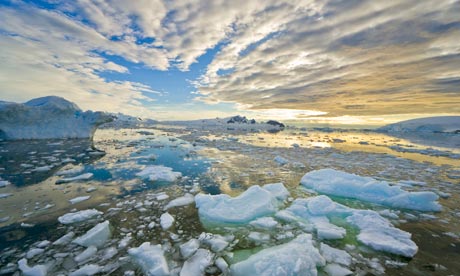One of the measurements climate change deniers, like to use for obfuscation are changes in coastal Antarctic sea ice. The changes are small compared to the rapid loss up north, but some of them are increases. Naturally, the same people who pay attention to every microgram of gain down under somehow manage to dismiss the glaring losses happening in the Great White North — not to mention the thousands of thermometers the world over — but when a couple of hundred miles of sea ice apepars down south they are on it bay-bay! Well, that’s how their particular right-wing con works. But now some researchers have a tentative explanation for the observation:
Guardian — The research on Antarctic sea ice, published in Nature Geoscience, revealed large regional variations. In places where warm winds blowing from the tropics towards Antarctica had become stronger, sea ice was being lost rapidly. “In some areas, such as the Bellingshausen Sea, the sea ice is being lost as fast as in the Arctic,” said Holland.
But in other areas, sea ice was being added as sea water left behind ice being blown away from the coast froze. The net effect is that there has been an extra 17,000 sq km of sea ice each year since 1978 – about a tenth of a percent of the maximum sea ice cover.
Antarctica is a continent surrounded by an ocean, whereas the Arctic is an ocean surrounded by a continent. For that reason, said Holland, sea ice was not able to expand by the same mechanism in the Arctic as at the southern pole, because if winds pushed the ice away from the pole it quickly hit land.


Of course, pseudoskeptics focus on Antarctic sea ice without looking at what is going on with the Antarctic ice that will affect sea level balance: Antarctic continental ice sheet.
How’s that doing?
Oooh, not so well.
It’s entirely feasible that increased melting in the Arctic will cause changes in sea and air currents which could favor the formation of Antarctic sea ice even as Antarctic land ice is melting. Not all ices are equal.